
Frontiers in Toxicology
Scope & Guideline
Fostering Collaboration in Toxicology Research
Introduction
Aims and Scopes
- Chemical Safety and Risk Assessment:
The journal emphasizes research on the safety of chemicals, including pharmaceuticals, environmental pollutants, and food additives. It explores methodologies for assessing risk and establishing safety limits, with a focus on human health implications. - Innovative Toxicological Testing Methods:
Frontiers in Toxicology promotes the use of advanced testing methodologies, including in vitro, in silico, and high-throughput screening techniques, to evaluate the toxicological profiles of substances and to replace or reduce animal testing. - Mechanistic Insights into Toxicity:
Research published in the journal often delves into the molecular and cellular mechanisms underlying toxic effects, contributing to a better understanding of how various substances induce toxicity and the pathways involved. - Environmental Toxicology and Ecotoxicology:
The journal covers studies on the impact of environmental contaminants on ecosystems, highlighting the importance of understanding how pollutants affect wildlife and the environment, and their potential return to human populations. - Developmental and Reproductive Toxicology:
A significant focus area includes the effects of toxic substances on reproductive health and developmental processes, with research aimed at understanding the implications of exposures during critical developmental windows. - Emerging Contaminants and Public Health:
Frontiers in Toxicology addresses the growing concern over emerging contaminants, such as microplastics and per- and polyfluoroalkyl substances (PFAS), and their implications for public health, prompting discussions on regulatory frameworks.
Trending and Emerging
- In Vitro and In Silico Models:
There is a significant increase in the use of in vitro and in silico models for toxicity testing, underscoring a shift towards more humane and efficient methodologies that can provide rapid and reliable toxicological data. - Focus on Environmental and Chemical Exposures:
Research is increasingly directed towards understanding the impacts of environmental contaminants and chemical exposures on human health, particularly concerning pollutants like PFAS and microplastics, highlighting the need for regulatory attention. - Personalized Toxicology and Individual Susceptibility:
Emerging studies are exploring the role of genetic and environmental factors in individual susceptibility to toxic effects, paving the way for personalized approaches in toxicology and risk assessment. - Mechanistic Studies of Developmental Toxicity:
There is a growing emphasis on understanding the mechanisms of developmental toxicity, particularly in relation to endocrine disruptors and their long-term effects on health outcomes across generations. - Integrative Approaches to Risk Assessment:
The trend is shifting towards integrative risk assessment frameworks that combine data from various sources, including omics technologies, to provide a more comprehensive understanding of chemical toxicity.
Declining or Waning
- Traditional Animal Testing Models:
There is a noticeable decrease in research focused on traditional animal testing models, as the field increasingly embraces alternative methodologies that reduce animal use and improve predictive capabilities of toxicity assessments. - General Toxicology Studies without Specific Focus:
Papers that present broad toxicological findings without a specific angle or application are becoming less common. The trend is moving towards more targeted studies that address specific mechanisms or regulatory needs. - Lack of Integration with Computational Toxicology:
Research that does not incorporate computational toxicology methods is waning, as the field recognizes the importance of integrating computational approaches for better risk assessment and predictive modeling. - Single-Substance Toxicity Studies:
There appears to be a decline in the focus on single-substance toxicity studies, with a growing interest in understanding the effects of mixtures and cumulative exposures, reflecting the complexity of real-world exposure scenarios.
Similar Journals
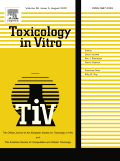
TOXICOLOGY IN VITRO
Advancing In Vitro Insights for Safer PharmaceuticalsTOXICOLOGY IN VITRO is a premier journal published by PERGAMON-ELSEVIER SCIENCE LTD, focusing on the latest advancements in the field of toxicology, particularly through in vitro methodologies. With an ISSN of 0887-2333 and an E-ISSN of 1879-3177, this journal serves as a critical platform for researchers aiming to disseminate their findings in toxicology, emphasizing innovative approaches and applications in pharmacology and toxicology. Featuring a commendable impact factor and classified in the second quartile (Q2) for both Medicine (miscellaneous) and Toxicology in 2023, the journal holds a significant position within the academic community, ranking 41st out of 133 in the Toxicology category according to Scopus, representing the 69th percentile. Despite being a subscription-based publication, it continuously attracts submissions from leading scientists worldwide, fostering a vibrant exchange of scientific knowledge. Since its inception in 1987, TOXICOLOGY IN VITRO has consistently aimed to enhance understanding of toxicological challenges, making it an invaluable resource for professionals, students, and researchers dedicated to developing safer pharmaceuticals and understanding the biological pathways influenced by potential toxic agents.

Journal of Environmental Science and Health Part C-Toxicology and Carcinogenesis
Diving Deep into Toxicology and Cancer ResearchThe Journal of Environmental Science and Health Part C-Toxicology and Carcinogenesis is a vital publication in the fields of environmental science, toxicology, and cancer research, published by Taylor & Francis Inc. With an ISSN of 2689-6583 and E-ISSN 2689-6591, this journal provides a platform for peer-reviewed research that explores the intersection of environmental factors and health outcomes, particularly focusing on toxicological and carcinogenic impacts. Though it does not currently offer Open Access, it remains a significant contributor to academia with its current ranking in the Q4 category for Cancer Research and Q3 in Health, Toxicology and Mutagenesis. The journal has converged from 2020 to 2024 and aims to disseminate pioneering studies that inform public health policies and foster a deeper understanding of environmental toxins. Aspiring researchers, professionals, and students will find this journal to be an essential resource for the latest findings and discussions within these critical fields.

TOXICOLOGY LETTERS
Driving innovation in the study of toxic substances.TOXICOLOGY LETTERS is a prominent journal dedicated to advancing the field of toxicology, providing a platform for high-quality research and reviews that explore the effects of chemical substances on biological systems. Published by Elsevier Ireland Ltd, this peer-reviewed journal has established itself as a vital resource in toxicological research since its inception in 1977, with a convergence of studies extending to 2024. With an impressive Scopus ranking, positioned at #28 out of 133 in the Toxicology category, TOXICOLOGY LETTERS garners a respectable percentile of 79, highlighting its significance in the academic community. Although it is not an open-access journal, its research is accessible through institutional subscriptions, ensuring that critical insights into human health and environmental safety are disseminated effectively. Being categorized in the Q2 quartile in both Medicine (miscellaneous) and Toxicology for 2023 further emphasizes its relevance and impact in these fields. This journal aims to foster collaboration between researchers and professionals, encouraging the exploration of innovative solutions to chemical hazards and the promotion of safer practices in pharmacology and toxicology.

Toxics is a leading international journal published by MDPI that has been dedicated to advancing the knowledge in the fields of toxicology, environmental health, and chemical safety since its inception in 2013. With an impressive Open Access model, it ensures that all research findings are readily available to a global audience, fostering collaboration and innovation across academia and industry. The journal is esteemed for its rigorous peer-review process and holds notable rankings, including Q1 status in Chemical Health and Safety and Q2 in both Health, Toxicology and Mutagenesis and Toxicology, reflecting its impact on critical research areas. Based in Basel, Switzerland, Toxics provides a platform for researchers, professionals, and students to disseminate significant findings on the implications of toxic substances in health and the environment, aiming to improve public health outcomes and inform regulatory decisions. With its ongoing commitment to high-quality research and relevant access options, Toxics continues to be an essential resource in the domain of toxicology and environmental sciences.
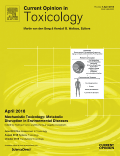
Current Opinion in Toxicology
Connecting Researchers to the Pulse of ToxicologyCurrent Opinion in Toxicology is a premier academic journal published by Elsevier, focusing on the latest advancements and perspectives in the field of toxicology. With an impressive impact factor reflecting its high citation and influence within the research community, this journal ranks in the Q1 category for Toxicology, positioned at #8 out of 133 in the Scopus Toxicology domain, placing it in the 94th percentile. The journal aims to provide concise and insightful reviews of contemporary research, fostering an understanding of critical issues related to toxic effects of chemicals and environmental agents. Although not an open access journal, it attracts a worldwide readership, making it an essential resource for researchers, professionals, and students committed to understanding toxicological science. Based in the Netherlands, Current Opinion in Toxicology serves as a platform for stimulating scholarly dialogue and guiding future research directions in this vital area of study.
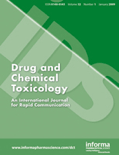
DRUG AND CHEMICAL TOXICOLOGY
Innovating research for a healthier tomorrow.Drug and Chemical Toxicology is a well-respected journal in the fields of toxicology, pharmacology, and public health, published by Taylor & Francis Ltd. Since its inception in 1978, this journal has diligently explored the effects and mechanisms of chemical exposures on health and the environment, fulfilling a crucial role in advancing scientific understanding and safeguarding public health. The journal is indexed across prestigious databases and features an impressive array of articles categorized within the Q2 and Q3 quartiles across various categories in 2023, reflecting its significance in Chemical Health and Safety as well as Environmental and Occupational Health disciplines. With an extensive reach and a focus on interdisciplinary research, Drug and Chemical Toxicology offers a rich repository of original research, reviews, and methodological advancements, catering to a diverse audience of researchers, professionals, and students dedicated to the betterment of safety and health standards. Although not an open-access publication, its articles are widely accessible to the academic community, ensuring that critical innovations and insights are shared for the greater good.

Toxicology Research
Exploring the intersection of health and environment.Toxicology Research is a distinguished journal dedicated to advancing the field of toxicology through the dissemination of high-quality research. Published by Oxford University Press, this UK-based journal focuses on critical aspects of toxicology and mutagenesis, highlighting both environmental and pharmacological implications. With an ISSN of 2045-452X and an E-ISSN of 2045-4538, it serves as a valuable resource for researchers, professionals, and students alike. Currently categorized in the Q3 quartile for Health, Toxicology and Mutagenesis, as well as Toxicology in 2023, Toxicology Research maintains a visible presence in Scopus rankings, positioning itself within the targeted professional community. Although the journal operates without open access options, its importance in contributing to scientific discussions and policy formation is undeniable. Covering content from 2012 to 2024, it continues to provide insights into contemporary toxicological challenges, thereby fostering interdisciplinary collaborations and informing best practices in health and safety.
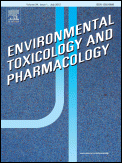
Environmental Toxicology and Pharmacology
Decoding the effects of toxins on living systems.Environmental Toxicology and Pharmacology, published by Elsevier, is a leading journal dedicated to advancing our understanding of the effects of environmental pollutants on biological systems. With an ISSN of 1382-6689 and an E-ISSN of 1872-7077, this journal covers a wide range of studies related to toxicology, pharmacology, and environmental health. The journal is classified as Q2 in key categories such as Health, Toxicology and Mutagenesis and Medicine (miscellaneous), and sits impressively in Q1 for Toxicology, reflecting its strong impact in the field. As of 2023, it ranks #30 out of 133 in Toxicology and #40 out of 148 in Health, indicating its high relevance and contribution to research. While the journal is not currently open access, it remains a pivotal resource for researchers, professionals, and students seeking to explore the intricacies of environmental health effects. Its commitment to publishing high-quality peer-reviewed research positions it as a crucial platform for scientific dialogue and discovery.

INTERNATIONAL JOURNAL OF TOXICOLOGY
Bridging Research and Practice in Toxicology.The International Journal of Toxicology, published by SAGE Publications Inc, serves as a cornerstone of scholarly research in the field of toxicology, with an established history dating back to 1982. This esteemed journal, ISSN 1091-5818 and E-ISSN 1092-874X, functions within the Q3 quartile in Toxicology, ranking 94 out of 133 in the Pharmacology, Toxicology and Pharmaceutics category per Scopus metrics, reflecting its commitment to advancing scientific understanding in this critical area. The journal not only aims to disseminate high-quality research but also encourages open access to vital studies, thus fostering collaboration and innovation among researchers, professionals, and students alike. With a focus on various aspects of toxicology, including but not limited to environmental, clinical, and molecular toxicology, the International Journal of Toxicology is dedicated to bridging gaps in toxicity research and promoting safe practices across numerous disciplines. As it converges towards 2024, the journal continues to play a vital role in shaping the discourse surrounding the implications of exposure to toxic substances in human health and the environment.
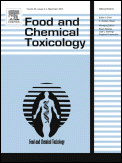
FOOD AND CHEMICAL TOXICOLOGY
Exploring the critical links between food safety and public health.FOOD AND CHEMICAL TOXICOLOGY, published by Pergamon-Elsevier Science Ltd, is a prestigious journal with a significant impact in the fields of food science, medicine, and toxicology, reflecting its Q1 and Q2 quartile rankings in various categories as of 2023. Established in 1982, this journal continues to serve as an essential platform for disseminating high-quality research focused on the toxicological assessment of foods and chemicals, aiming to advance knowledge that affects public health and safety. With a pivotal role in integrating diverse disciplines, including pharmacology and agricultural sciences, the journal ranks impressively within the top percentiles—specifically 95th in Toxicology and 92nd in Food Science on the Scopus metrics. Though it operates on a traditional subscription model, the journal is committed to providing valuable insights and findings to researchers, professionals, and students across the globe, making it a vital resource in the ongoing discourse around food safety and environmental health. Its comprehensive scope underscores its importance in shaping evidence-based policies and practices.